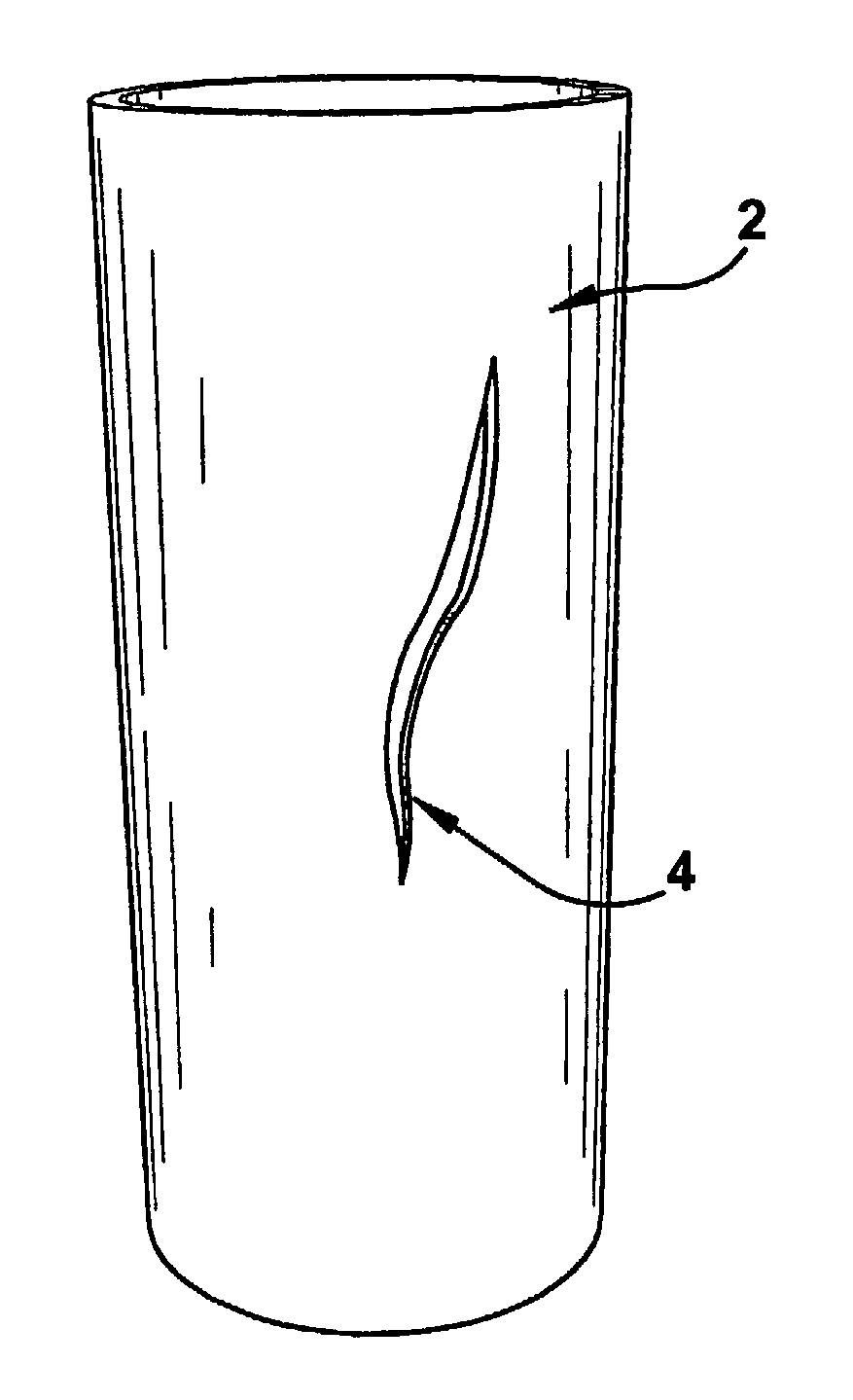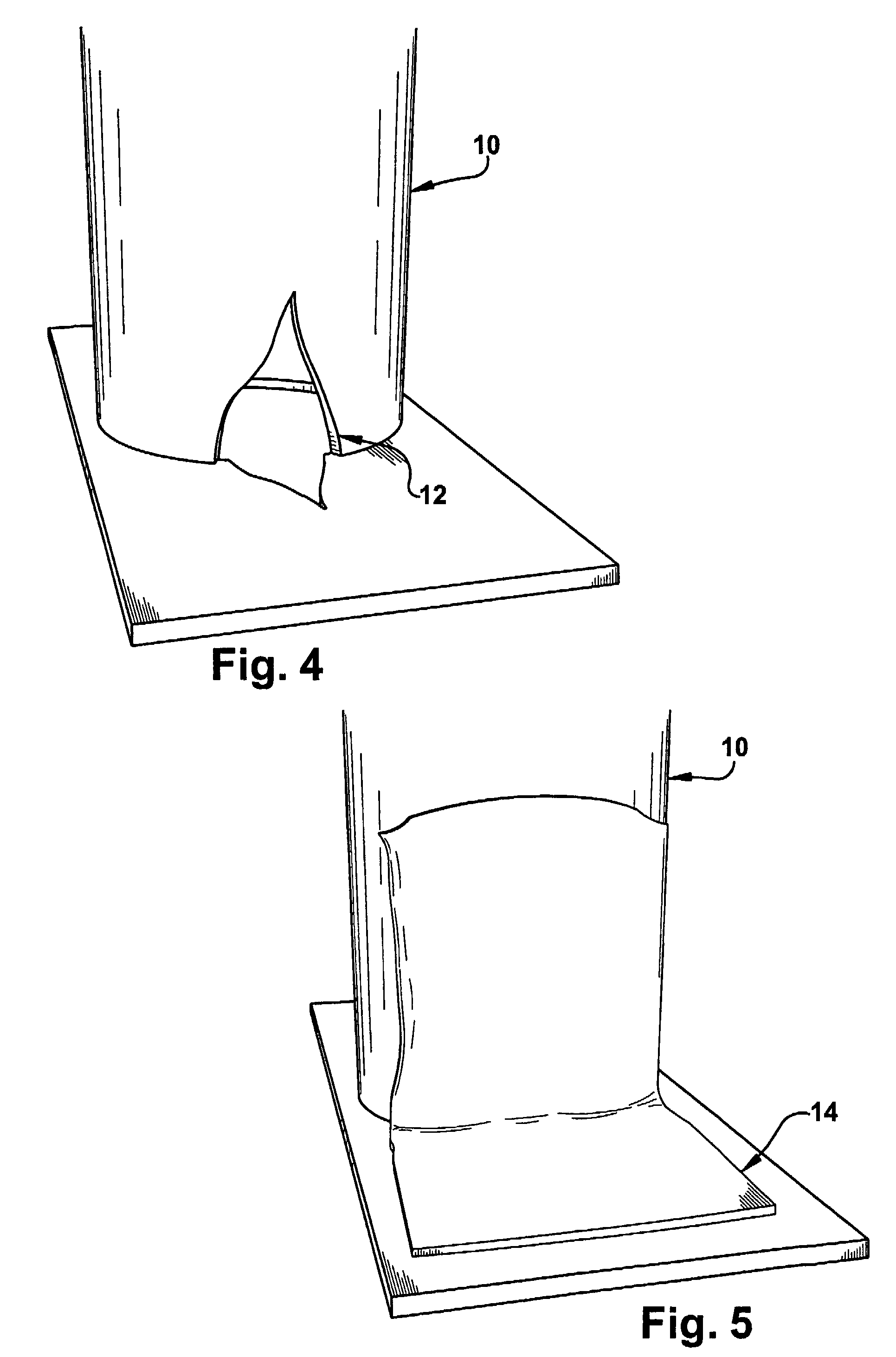Method of making and using shape memory polymer composite patches
a polymer composite patch and shape memory technology, applied in the field of composite patch repair, can solve the problems of composite material to become soft again, lose its molded shape, etc., and achieve the effect of reducing the time for permanent repair of damaged parts, reducing composite repair time, and affordable pri
- Summary
- Abstract
- Description
- Claims
- Application Information
AI Technical Summary
Benefits of technology
Problems solved by technology
Method used
Image
Examples
example 1
[0054]A polymeric reaction mixture was formulated by mixing vinyl neodecanoate (10%), divinyl benzene (0.8%), and styrene (85.2%) in random order to yield a clear solution. Benzoyl peroxide paste (4%) which is 50% benzoyl peroxide, was then added to the resulting solution (all composition % are by weight). The resulting solution was kept cold in a refrigerator before use. To prepare the shape memory polymer resin matrix composite sheet, a piece of 3D weave carbon fiber is placed on a glass sheet, ensuring that there are no stray fibers and the carbon fiber piece is smooth. Next, pour some of the polymeric reaction mixture onto the carbon fiber. Use a plastic squeegee or plastic spreader to spread the resin evenly over the entire surface of the fabric. Thoroughly remove air bubbles and straighten the fabric. Place bleeder and breather fabric on top of the resin soaked carbon fiber. Then place the entire system in a high temperature vacuum bag with a vacuum valve stem and apply vacuum...
example 2
[0055]A polymeric reaction mixture was formulated by mixing vinyl neodecanoate (10%), divinyl benzene (0.8%), and styrene (55.2%) in random order to form a colorless solution. Polystyrene granules (30%) were then added to the resulting solution. The resulting mixture was then allowed to sit at room temperature with occasional stirring until all the polystyrene granules were dissolved to give a clear, viscous solution. Benzoyl peroxide (4%) which is 50% benzoyl peroxide was then added to the resulting solution (all composition % are by weight). The resulting polymeric reaction mixture is continually stirred at or near 25° C., not to exceed 30° C. until a clear solution is achieved which can take 2 hours or more. The resulting solution is kept cold in a refrigerator before use. To prepare the shape memory polymer resin matrix composite sheet, a piece of 3D weave carbon fiber is placed on a glass sheet, ensuring that there are no stray fibers and the carbon fiber piece is smooth. Next,...
example 3
[0095]In order to bond a shape memory polymer composite patch to fiberglass, the area around the damaged portion of a part or the area near the portion of the part to be joined to another, the applicable area is scuff sanded and solvent wiped to ensure a clean, smooth bonding surface. Additionally, scuff sand and solvent wipe the side of the patch to be bonded to the substrate. Using 3M's 9485 PC High-Performance Adhesive Transfer Tape, apply the tape to the patch manually leaving the backing on the adhesive. Using the patch from Example 1 heat the patch above its transition temperature in an oven which is at or near 90° C. Remove the patch / adhesive from the oven, peel away the adhesive backing and form patch to fiberglass surface manually or with assistance of a vacuum pad or bagging.
PUM
| Property | Measurement | Unit |
|---|---|---|
| elongation | aaaaa | aaaaa |
| time | aaaaa | aaaaa |
| cure temperatures | aaaaa | aaaaa |
Abstract
Description
Claims
Application Information
 Login to View More
Login to View More - R&D
- Intellectual Property
- Life Sciences
- Materials
- Tech Scout
- Unparalleled Data Quality
- Higher Quality Content
- 60% Fewer Hallucinations
Browse by: Latest US Patents, China's latest patents, Technical Efficacy Thesaurus, Application Domain, Technology Topic, Popular Technical Reports.
© 2025 PatSnap. All rights reserved.Legal|Privacy policy|Modern Slavery Act Transparency Statement|Sitemap|About US| Contact US: help@patsnap.com



